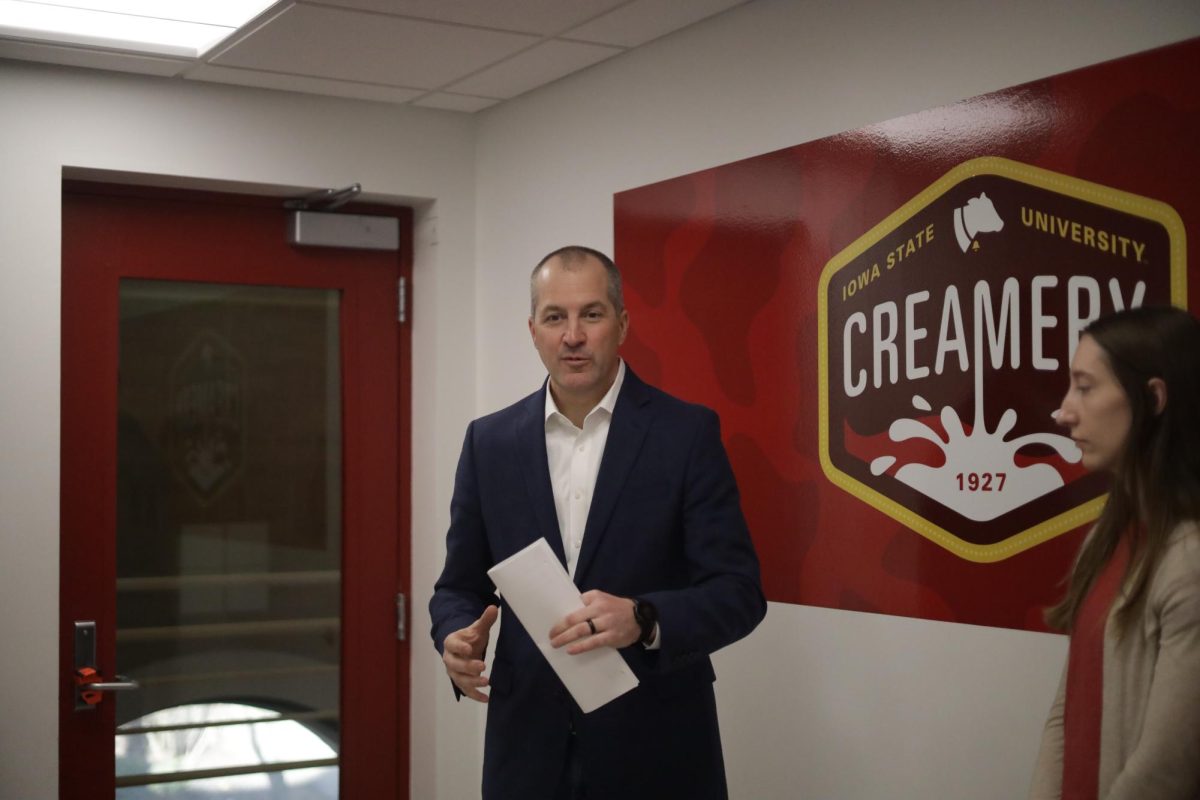ClusterFlunk spreads to ISU
Jonathan Krueger/Iowa State Daily
Clusterflunk is a website where students can collaborate on assignments. It’s wondered if it is considered a form of cheating.
February 19, 2014
ClusterFlunk, a new website for university students, may have possible academic integrity issues.
The website was created by two University of Iowa students, Adam Nelson and Joe Dallago.
“ClusterFlunk is a website that allows you to connect with other students that are specifically in your classes,” Nelson said. “It’s like a Facebook group for your class at the university. You can instant message, upload and download files.”
ClusterFlunk was created off the idea that classmates weren’t connecting with one another and study resources between students were not available.
“We were baffled at the idea that there can be 400 students in a lecture and you don’t know a single one,” Nelson said. “Who knows if one of those people are your future wife or your future business partner?”
Although ClusterFlunk is intended to be used as an academic resource, ISU students are urged to be mindful about what they share on the website, as well as anywhere online, about their classes. ISU officials have been informed about many note-sharing websites in the past and would like students to keep the university’s academic dishonesty policy in mind when on these websites.
“First and foremost, a student should consult his or her syllabus and consult with the faculty member or instructor for a given course,” said Michelle Boettcher, assistant dean of students and director of judicial affairs. “This is the best way to proactively avoid any allegation of misconduct.”
ClusterFlunk had its beginning two years ago at the University of Iowa. The website had a trial period during 2013 to determine if the website would be successful.
After receiving feedback from 10,000 students at the University of Iowa, Nelson said they expect to have more than 100,000 users by the end of the semester and spikes during midterms and finals as they spread the website to universities all over the nation.
“It’s a pretty cool feeling when you have students tweeting at you that you just saved their life,” Nelson said. “You can see that students are meeting with their classmates.”
ClusterFlunk differs from other educational sharing websites because everything is completely free to users. Nelson believes that students shouldn’t have to pay to meet other students in the class or share study materials. The website is free to join and it always will be, Nelson said.
One feature of ClusterFlunk is the ability to post either anonymously or not. This allows students who are nervous to ask questions in class the ability to ask them online.
ClusterFlunk was created to be as user friendly as possible, too. All of the courses are already on the website. All students have to do is join them.
“We really pride ourselves on user experience,” Nelson said. “We make it as stupid-easy as possible to connect with students in your class.”
Some faculty members are looking at how students will actually use the website.
“What the creators of ClusterFlunk have done is fill a gap left by Facebook,” said Michael Bugeja, director of the Greenlee School of Journalism and Communication.
Bugeja also said Facebook used to only include university students, and students used to use Facebook to talk about projects or plan to meet somewhere.
“When Facebook decided to open up registration to anyone and go national, it was a very good move financially for them, but what Facebook lost was that locality concerning the ability to contact people about everything from homework to meeting at a certain place,” Bugeja said.
Boettcher also offered some considerations and reminders to students about how to avoid committing academic dishonesty.
“Students cannot and should not post notes, slides or other materials created or shared by the faculty member or instructor,” Boettcher said. “This includes material the instructor makes available for the entire class. Students should not share material that has not been generated on their own.”
Aside from possible academic integrity issues, the current usage of ClusterFlunk has some faculty members concerned that the website will be not completely be used for its intended purpose.
“I do see the customary way that students use social media websites like Facebook being a much larger concern because they have been pre-programmed by Facebook to respond in certain manners, no matter what digital application they are using,” Bugeja said. “There are messages on ClusterFlunk about subleasing apartments, there are only a couple posts about homework and there are many posts about the wild party at the University of Iowa [for registering at least 5,000 ClusterFlunk users from that university].”
Iowa State has more than 500 members on ClusterFlunk as of Feb. 18.







